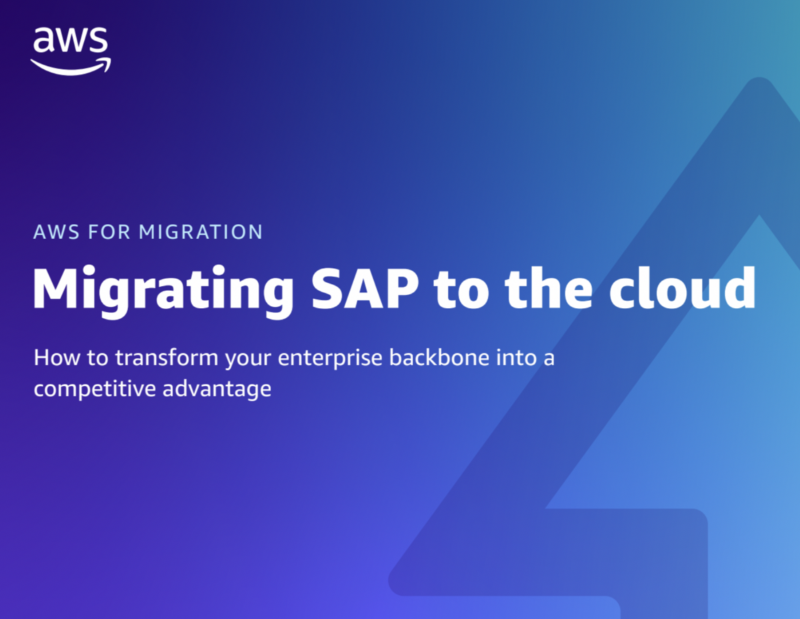Migrating SAP to the cloud
Published on 23 Nov 2022

The cloud has become the norm for operating and updating SAP workloads. SAP is used on the cloud by market leaders such as BP, Bristol-Myers Squibb, ENGIE, and Liberty Mutual to innovate more quickly, increase data value, enhance dependability and security, and save costs.
Moderna Therapeutics migrated its SAP installation to the cloud in 2017 to take advantage of these and other advantages. The business established a 200,000-square-foot facility to manufacture mRNA therapies and vaccines of clinical quality. SAP S/4HANA, which leverages cloud services to link to factory instruments, robots, and other critical technologies, formed the foundation of the facility's IT environment.
Moderna produced exceptional outcomes by combining the power of SAP S/4HANA with the flexibility and speed of the cloud. The business accelerated preclinical medication development, decreased expenses, and boosted the flexibility of its research, development, and manufacturing processes. For instance, the quick creation and testing of Moderna's COVID-19 vaccine would have been inconceivable even a few years ago.
Addressing frequently asked concerns about SAP in the cloud
As you investigate SAP migration, you may have concerns regarding the cloud and how it will meet your specific requirements. In this part, we'll answer some frequently asked issues concerning the cloud and SAP and examine how enterprises have handled them.
Can mission-critical, large-scale SAP production systems be operated in the cloud?
The cloud enables most enterprises, even those with expansive production settings, to achieve greater SAP workload dependability and performance.
By shifting its SAP system to the cloud, Deutsche Bahn (DB), one of Europe's leading railway transport companies, reaped significant advantages. In the cloud, DB can now create servers in minutes, produce reports in seconds, and save between 50 and 60 percent on the cost of third-party apps.
NBCUniversal has just migrated its SAP installation to the cloud, which includes over 96,000 worldwide user accounts, an 80+ terabyte database, and 163,000 bespoke objects. This resulted in a 40 percent average decrease in user response time, a 65–94 percent trend improvement in work processing time, and a 23 percent long-term TCO reduction.
In addition, by migrating its SAP system to the cloud, the multinational food manufacturer Kellogg's European branch saw significant performance benefits. The organization improved batch task execution by an average of 45 percent, with certain processes, completed 90 percent quicker than previously.
How can we expedite the SAP conversion while minimizing business interruptions?
Using established technologies, cloud providers, and consulting partners expedite and improve the predictability of migration.
You can migrate data and apps to the cloud quickly and securely with the assistance of SAP, cloud providers, and consultancy partners.
For instance, within 48 hours, Zappos updated their SAP landscape to SAP HANA and relocated it to the cloud. Additionally, the US Navy transitioned its biggest SAP ERP system, which serves 72,000 users across six US Navy commands, to the cloud ten months earlier than planned.
Moreover, by collaborating with consulting partners with expertise in SAP and cloud migration, you may move more effectively, take advantage of cloud designs based on known best practices, and create an effective cloud operating model for SAP.
How does the cloud satisfy our SAP workloads' security and compliance requirements?
Provider controls, native and third-party technologies, and automation enhance your cloud security posture and simplify compliance. You may inherit the cloud provider's compliance rules by migrating to the cloud. Cloud providers can monitor and defend the underlying infrastructure around-the-clock by using redundant and layered controls, constant validation and testing, and a large level of automation.
AWS supports security standards and compliance certifications, including FedRAMP, FIPS 140-2, GDPR, HIPAA/ HITECH, NIST 800-171, and PCI DSS.
You may use a vast array of native and third-party tools and capabilities to reinforce your security posture further. In addition to enhancing your compliance and certification procedures, native cloud security controls provide you with cost- and time-saving technologies for managing your specialized security assurance needs.
Seaco, the world's biggest sea-container leasing firm, is one example. It leverages cloud-native services to virtually isolate and regulate access to resources at the granular level, monitor its network more closely, and securely offer virtual desktops.
Compliance and reporting may also be streamlined and automated through the cloud. Bristol Myers Squibb, for instance, utilizes cloud-native technologies to develop a uniform, scalable, and repeatable compliance process for GxP and other essential regulatory needs. This eliminates several compliance processes and enables the organization to concentrate on its SAP transition.
Download AWS's whitepaper to learn more about Migrating SAP to the Cloud Guide only on Whitepapers Online.
